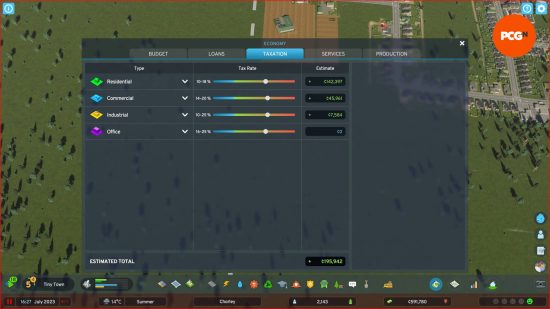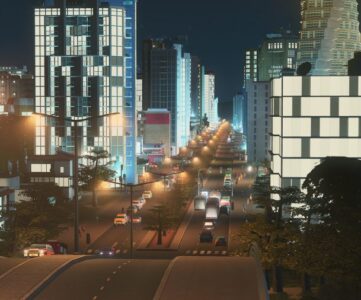[ad_1]
How do you manage Cities Skylines 2 taxes? As you build your first city, you may notice that you’re hemorrhaging money on expenses you didn’t know you needed to pay for. So naturally, you’re looking for ways to recoup some savings to pay for goods and services for your residents and workers. However, just like it would be for a real government, raising taxes is not a popular option.
To raise taxes in Cities Skylines 2, you need to explore menus to get the data you need and change multiple sliders. So where do you strike a balance, and are there other ways to get Cities Skylines 2 money? That’s pretty much one of the main points of the management game, with the other being to create a buzzing metropolis connected by a network of roads. However, with so many options on the screen at any time, it can be tricky to find at a glance, so we’ll show you how and give you some tips on how to manipulate the CS2 taxes to fund your city fairly.
How to change Cities Skylines 2 taxes
To change Cities Skylines 2 taxes, you need to click on the Economy button, which is the icon with the green paper money with the cent currency over the top. You can then click the Taxation tab to find the values for Residential, Commercial, Industrial, and Office taxation figures. Slide the bars to increase or decrease taxes in your area, but note this will affect overall happiness in your entire settlement.
Our recommendation is to increase things slowly and try to avoid increasing the Residential slider too much where possible. You can also split the taxation between those with “higher education”, who may have more expensive houses and better-paid jobs than lower-income families. In contrast, the industry tabs can be increased a fair chunk before they start getting antsy with you, anywhere below the 15% mark or the 12% mark if you want the sweet spot.
While you’re on this screen, you may also wish to look at the Services tab. This shows your allocated budget for each of your core Cities Skylines 2 industries that keep your town running, such as electricity, water, healthcare, and more. You’ll even be able to manage Cities Skylines 2 garbage budgets on this screen. You don’t need to operate these at full efficiency, with most being fine anywhere from 85% capacity and upward.
You can also use the City Statistics button – the bar chart icon near the bottom right corner of the screen, to get a detailed view of your finances, budget, and wealth. You can use this information to work out where your necessary taxes need to come from and if any industries are under-taxed.
With these changes to your Cities Skylines 2 taxes, you should be seeing some improvement in your overall income. When you’re ready to invest in more infrastructure, check out our Cities Skylines 2 guide for every tip you could possibly look for, as well as the Cities Skylines 2 highways and Cities Skylines 2 traffic guides for help on road management.
[ad_1]





